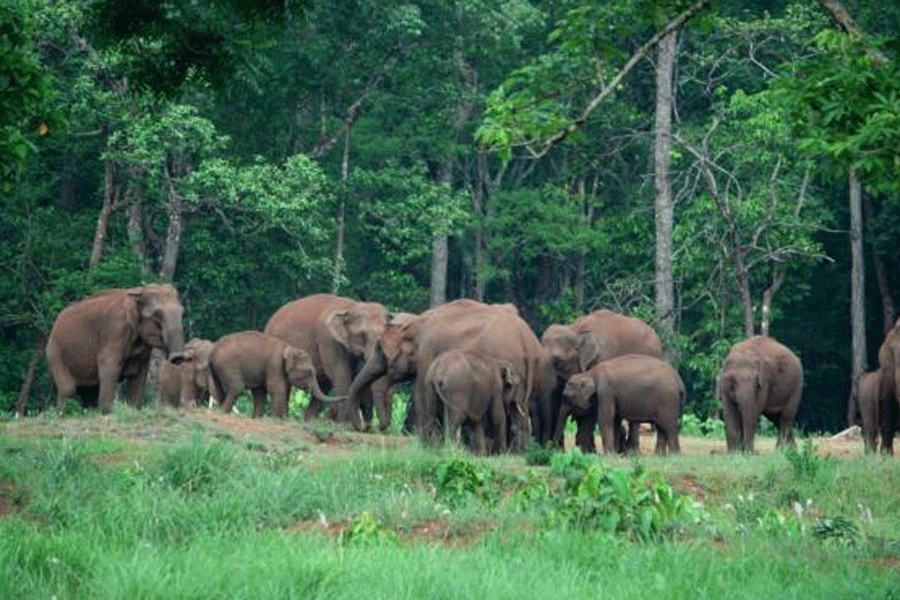“An animal is, after all, an animal.” Tanu, fierce in her words, confronts her husband, Ramu, in the film, Haathi Mere Saathi, when she learns that a child of the mahout was stampeded upon by the elephant that he raised. Ramu, an animal lover, declares his love for the animals saying, “[i]n the world, the animals with two legs are the most dangerous animals.” Tanu and Ramu signify two aspects of the human-animal relationship. However, love for animals — domestic and wild — and their human-friendly characteristics disproportionately occupy popular portrayals of such ties. The realistic parallel of conflict, similar to the one experienced by Tanu, is intense and costs lives, but their representation is significantly lesser in popular culture.
As a person who grew up in a village in the proximity of the Western Ghats in Kerala, I realised that the widely-acclaimed abundance of animal species is more often life-threatening than an endearing factor to the local people. Elephants, wild boars, monkeys, sambars, peacocks and civet cats raid the fields of marginal farmers, devastating their livelihood. No youngster in my locality would risk venturing into farming due to the intrusion of wild animals into crops and lives. The struggles of these people, their lack of agency, and the conflict between farmers and wild animals are absent in cinematic portrayals.
Elephants in films such as Haathi Mere Saathi are intelligent; they fathom difficult situations for humans and respond to them. The cultural and religious significance attached to elephants has also found representation in films. Malayali films like Aanachandam and Guruvayoor Kesavan depict elephants as kind animals. The elephants that appear in films and on religious occasions have undergone the process of taming, which in itself is a rigorous conflict between the trainers and the animals to make the latter docile. This ‘conflict’ does not appear in films. The audience only sees the elephants as creatures of the wild that appear to understand and adapt to human ways. The Elephant Whisperers, the recipient of an Oscar for the best documentary short film this year, also celebrates human-elephant harmonious coexistence. However captivating these portrayals may be, the potential havoc an elephant can create in human settlements is a serious concern. In Kerala alone, elephants claimed 105 lives between 2018 and 2022. Daily life is also affected due to crop raids and shelter damages, and the animals restrict the free movement of people. Farmers living in locations that share boundaries with the forests live at the mercy of these unpredictable creatures.
Domesticated animals such as dogs also deserve a mention in the discussion surrounding the portrayals of human-animal co-existence. Marley and Me and Hachi are stories surrounding the lives of dogs and their love for humans where they appear as capable of thinking and acting like humans. These anthropomorphic representations enthral viewers and evoke a sense of curiosity for and awe of the animal world. They are conditioned to think in this manner because of misleading visual content produced with creative liberties. Missing, once again, in these portrayals are rabies deaths which, according to the World Health Organization, account for 18,000-20,000 fatalities in India annually. The cinematic portrayal of human-dog friendships targets young viewers; ironically, the victims of rabies are primarily children below the age of 15 years.
Animated films and cartoons made with computer-generated imagery, such as The Jungle Book and Brother Bear, also depict the harmonious coexistence between humans and wild animals, even those with predatory traits. Such portrayals generate an idealistic notion of the animal world, especially among consumers who are at the risk of remaining ignorant about the raging man-animal conflict. Representing animals as creatures capable of coexisting with humans unduly disregards the conflicts and their aftermath on human life and settlements. Should not conflict in the human-animal relationship find adequate artistic representation?
Nelson Varghese is pursuing a PhD in Cultural Studies at Christ University, Bengaluru











